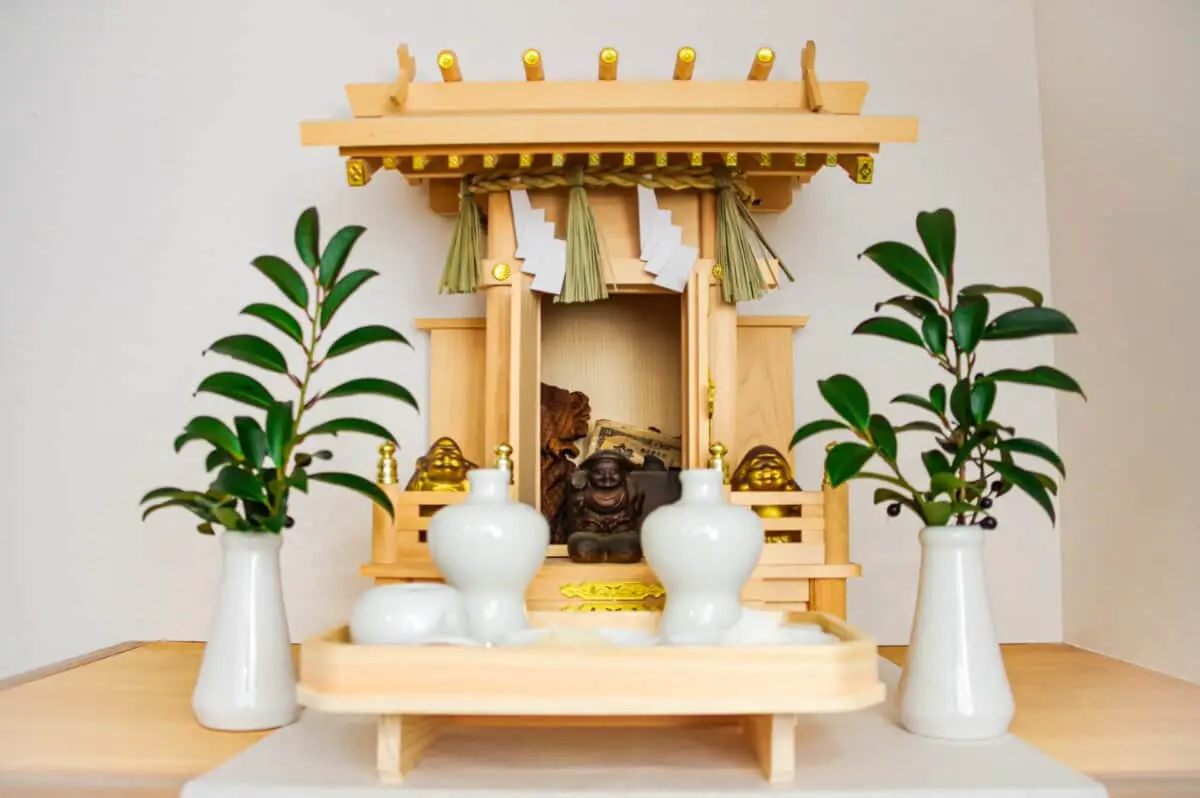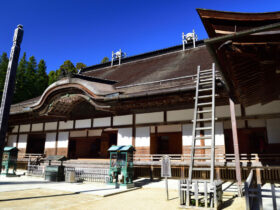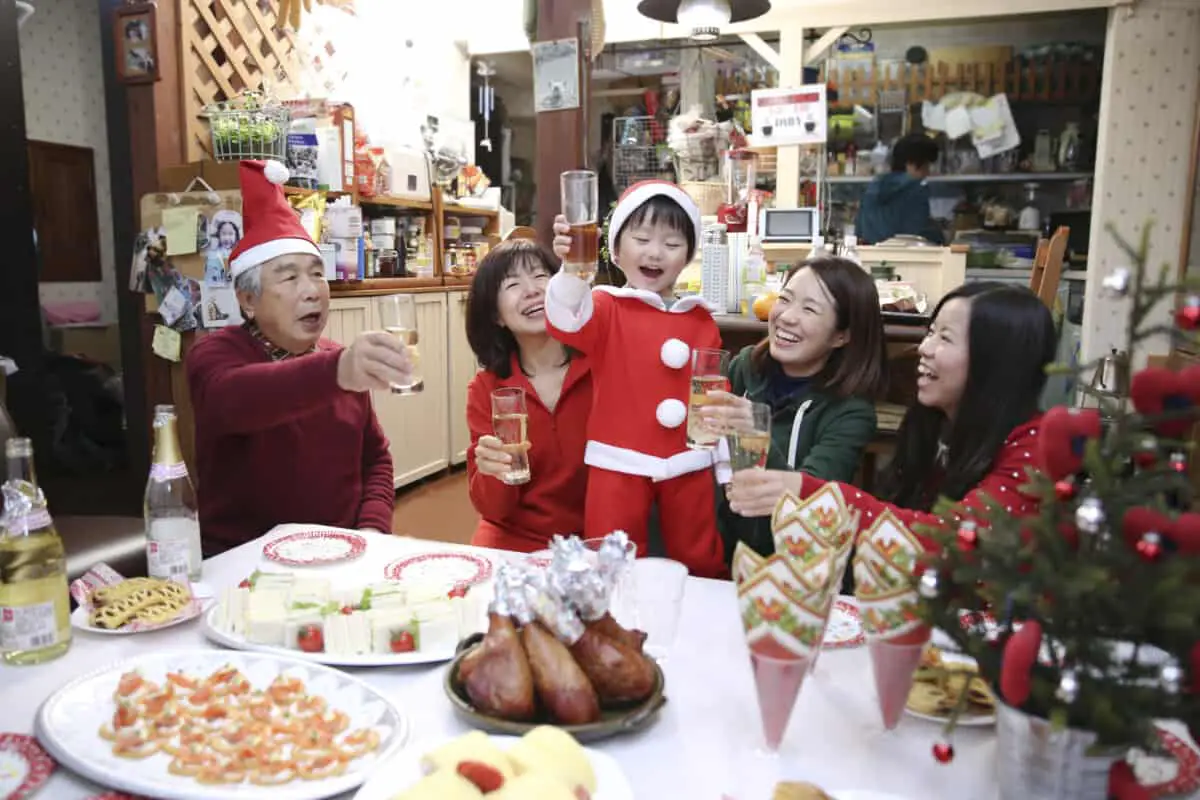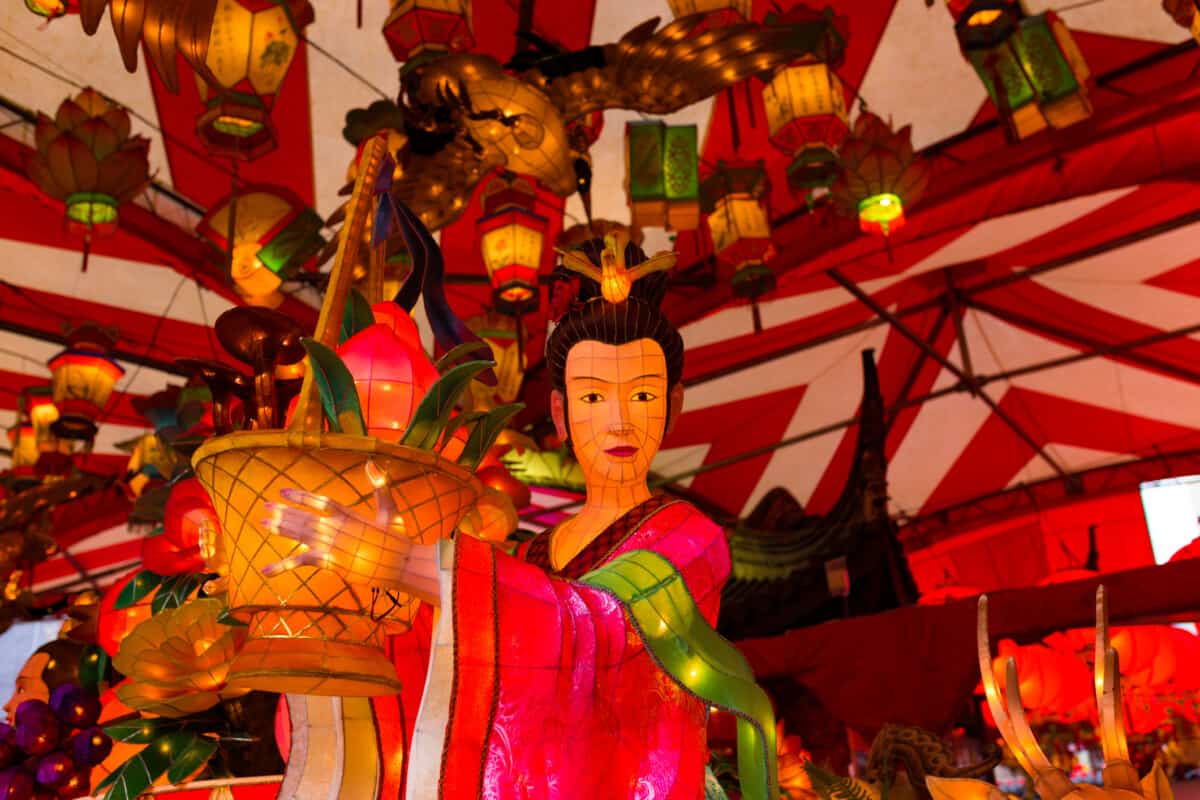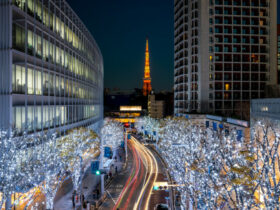Prayer and spirituality are two important components of Japanese culture. There are many traditions and objects of symbolism that Japanese people of the Shinto faith hold dear, including having a kamidana in their home.
A kamidana is also known as a spirit shelf, and it’s essentially a small altar that those of the Shinto faith often erect in their homes.
There are many elements that go into a proper kamidana that all represent some aspect of a Shinto ceremony.
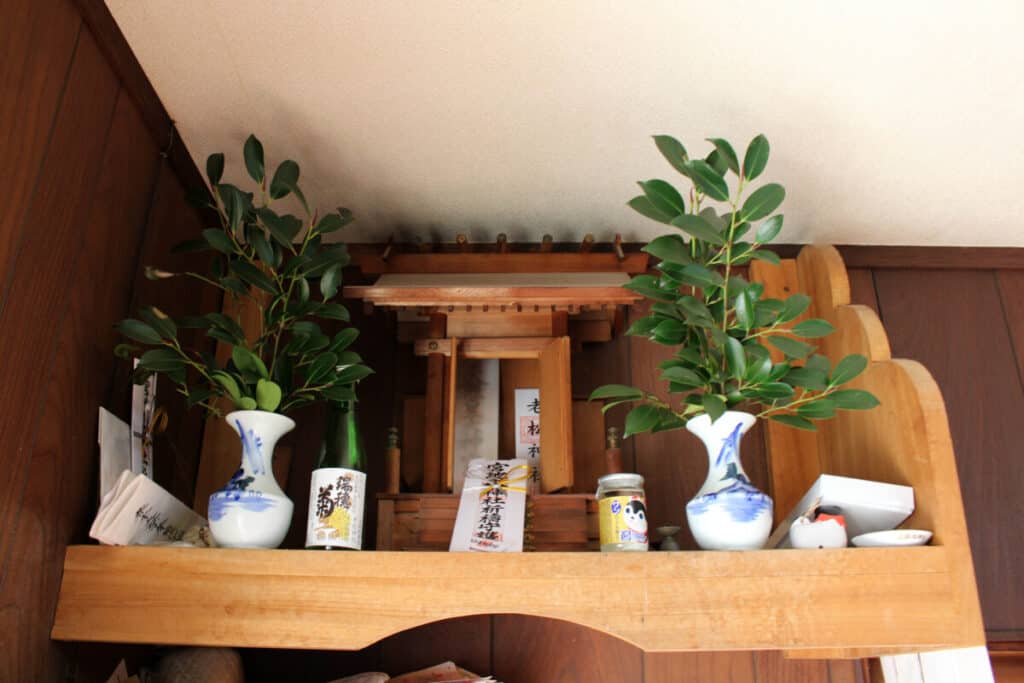
Shintai
A shintai is a vessel in which the spirit of the kami, or god, that the household wishes to honor is said to be held in. While the object can be whatever the family chooses, there are some items that are usually seen as a shintai.
One such item is a small mirror. It can also be an item that has some sort of significance to the household.
Ofuda
An ofuda is a very important element of a kamidana, and is considered a talisman. It can be found at either a Shinto Shrine or a Buddhist temple, and is usually made from wood or paper.
The talisman is supposed to encapsulate and represent a particular kami, and is said to have some of its powers sealed within it.
Different ofudas can represent different kamis, and each shrine or temple will have their own that people can use in their own kamidanas.
On the ofuda, you can see the name of either the shrine or the kami, and it usually also has the shrine or temple seal stamped onto it.
Shingu
The shingu are objects or tools that are often used in different Shinto ceremonies. There are ten different types of objects that can be placed inside a kamidana, each of which has a special name and its own particular purpose.
These objects include:
- Sakaki: The sakaki are branches from a Japanese evergreen tree, and there are usually two placed on the kamidana. Sometimes, these are artificial sakaki branches instead, so they don’t have to be watered.
- Sakaki-tate: This is the vase that holds the sakaki branches.
- Kagari-bi: These are traditional candle holders, as candles are often lit during special occasions. Some people use little electronic lanterns instead to avoid a fire hazard.
- Torii: A torii is a traditional gate often placed at the entrance of a shrine; this is a miniature version.
- Kumo: A piece of paper is often used with the word kumo written on it, which means cloud.
- Heishi: A heishi is a little bottle that holds sake, which is often offered to the kami housed in the kamidana.
- Shinko: A shinko is a white fox, and a little statue of the animal is often placed in the kamidana. Sometimes, a komainu, or a lion dog, is placed here instead.
- Shinkyo: This is the sacred mirror that is sometimes used to symbolize the kami which the altar is dedicated to.
- Mizutama: The mizutama is the bottle which holds the water offered to the kami.
- Hirazara: There are usually two of these little plates; the left one holds the rice, and the right one holds the salt, both of which are typical offerings made to the kami.
These are the shingu that are used within a kamidana most often, but others can be used as well.
The Chosen Kami
The kami honored in the kamidana can be one of the household’s choosing. It’s commonplace to see a kami that is said to protect one of the professions of a person in the household represented in the altar.
Kanjo
The kanjo is a special ceremony to both the Shinto and Buddhist faiths, though it originated in Buddhism. It is the process by which a kami, or a buddha or bodhisattva, is requested to remain in the world in order to help and protect others.
The kami is then divided and becomes a bunrei, and its embodiment can then be placed into smaller shrines that become part of the kamidana.
Where To Put A Kamidana
There are particular rules for where a kamidana should be placed inside a home or establishment. The kamidana must face either the east or south and cannot be put on the floor.
It must be hung up or put on a shelf close to the ceiling on the top floor of the home or establishment.
If for any reason, you cannot put the kamidana on the top floor, there must be placed below a piece of paper that says either ten or kumo, which is the sky or the cloud.
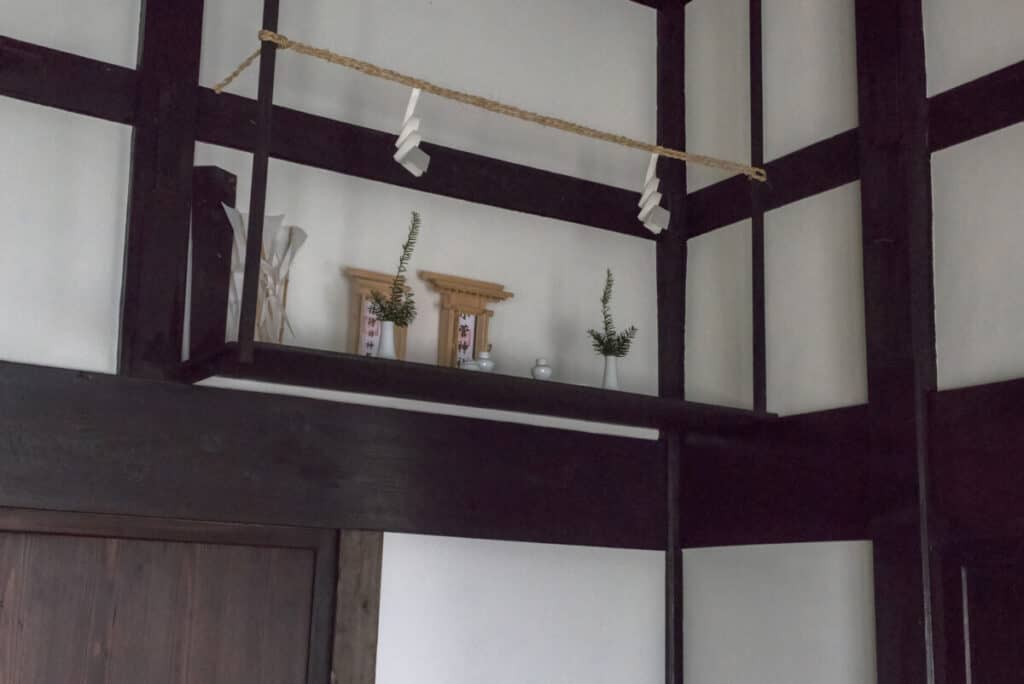
Praying At A Kamidana
The people of the household or establishment that puts up a kamidana will usually spend some time praying at the altar.
It’s an important part of the custom to wash both your hands and your mouth before starting your prayer.
Sometimes, an offering will be placed on the kamidana, such as a small portion of food or some flowers.
Shinsen
Shinsen is the name for the offerings that are placed on the altar. Some of the typical offerings given include either boiled or rinsed rice, sake, water, and salt. Other offerings that can be made include fruits, candies, or raw fish.
The offerings are to be placed in a particular way, and they usually get changed out twice a month, on the first and fifteenth, and on the day of remembrance for the kami which is worshiped in the kamidana.
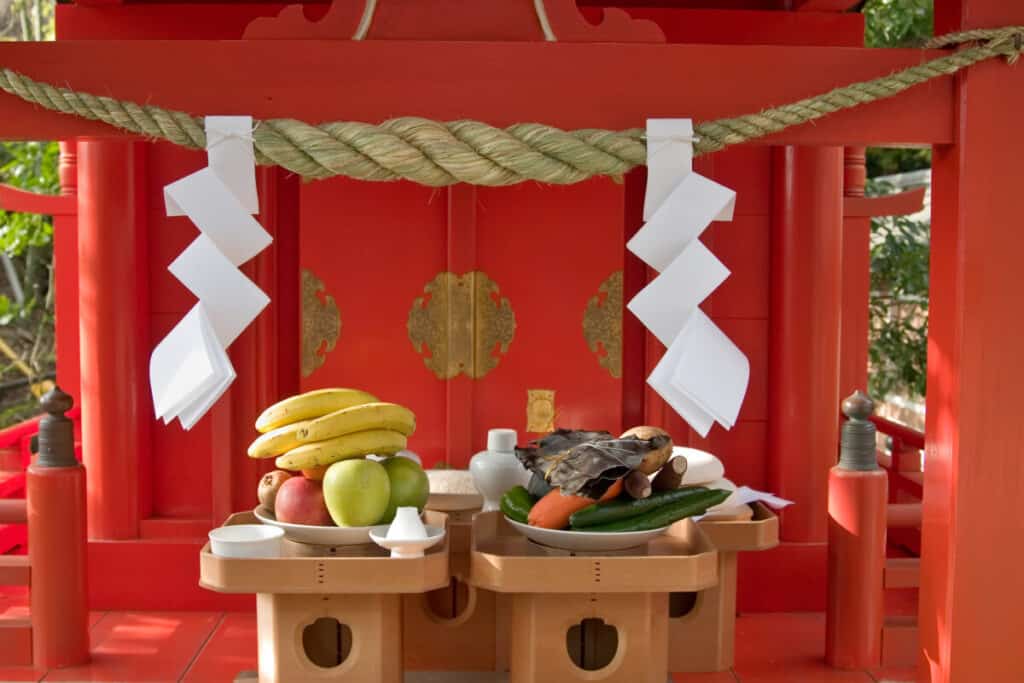
After changing the offerings, the food or other consumables that were offered up can be eaten in a process known as osagari.
Other Locations For A Kamidana
It’s also somewhat customary to see a kamidana placed inside a martial arts dojo. Different types of shrines or altars were once used, but since the early 1900s, kamidanas have taken the place of those previous shrines.
There are particular practices witnessed in front of the kamidana when coming into the dojo. Not all modern dojos have continued the practice of putting up a kamidana, now that there is more of a separation of spirituality or religion and state.

